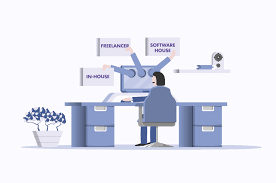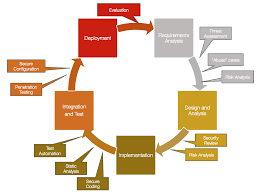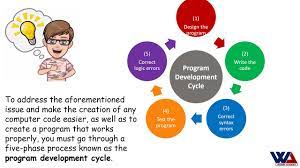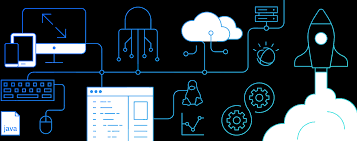Unveiling the World of Software and Applications Programmers: Crafting Digital Solutions
The World of Software and Applications Programmers
Software and applications programmers are the creative minds behind the development of various software applications that we use in our daily lives. From mobile apps to complex business systems, these professionals play a crucial role in shaping the digital landscape.
Roles and Responsibilities
Software and applications programmers design, develop, and test software applications to meet specific user needs. They analyze user requirements, create algorithms, write code in various programming languages, and ensure that the software functions seamlessly.
Skills Required
To excel in this field, software and applications programmers need a strong foundation in programming languages such as Java, C++, Python, or JavaScript. They must also have problem-solving skills, attention to detail, and the ability to work collaboratively in a team environment.
Career Opportunities
The demand for skilled software and applications programmers is on the rise across industries such as technology, healthcare, finance, and entertainment. With the rapid advancement of technology, there is a wide range of career opportunities available for professionals in this field.
Challenges and Rewards
While working as a software and applications programmer can be challenging due to tight deadlines and complex projects, the rewards are significant. These professionals have the opportunity to create innovative solutions that improve efficiency, enhance user experiences, and drive business growth.
Conclusion
In conclusion, software and applications programmers are essential players in the digital age. Their expertise powers the development of cutting-edge software solutions that shape our modern world. If you have a passion for coding and problem-solving, a career as a software programmer may be an exciting path for you to explore.
9 Essential Tips for Software Programmers to Enhance Skills and Boost Productivity
- Stay updated with the latest programming languages and technologies.
- Practice regularly to improve your coding skills.
- Collaborate with other programmers to learn new techniques and approaches.
- Write clean and well-documented code for easier maintenance.
- Test your code thoroughly to ensure its reliability and functionality.
- Seek feedback from peers to enhance your coding practices.
- Stay organized by using version control systems like Git.
- Attend workshops, conferences, and online courses to expand your knowledge.
- Take breaks to avoid burnout and maintain productivity.
Stay updated with the latest programming languages and technologies.
To excel as a software and applications programmer, it is crucial to stay updated with the latest programming languages and technologies. The field of technology evolves rapidly, and by keeping abreast of new developments, programmers can enhance their skills, adapt to industry trends, and remain competitive in the job market. Continuous learning and exploration of emerging languages and tools not only expand one’s knowledge but also open up new opportunities for innovation and growth in the ever-changing world of software development.
Practice regularly to improve your coding skills.
To enhance your proficiency as a software and applications programmer, it is crucial to practice coding regularly. By dedicating time each day to writing code, solving problems, and exploring new programming concepts, you can sharpen your skills and stay updated with the latest industry trends. Consistent practice not only strengthens your coding abilities but also boosts your confidence in tackling complex projects effectively. Remember, practice makes perfect in the world of software development.
Collaborate with other programmers to learn new techniques and approaches.
Collaborating with other programmers is a valuable tip for software and applications programmers looking to enhance their skills and stay updated on new techniques and approaches. By working together with peers, programmers can exchange knowledge, share best practices, and gain insights into different problem-solving strategies. This collaborative environment fosters creativity, encourages continuous learning, and ultimately leads to the development of more innovative and efficient software solutions. Embracing collaboration not only expands one’s technical expertise but also cultivates a sense of community within the programming industry.
Write clean and well-documented code for easier maintenance.
To optimize the efficiency and longevity of software applications, it is crucial for software and applications programmers to adhere to the tip of writing clean and well-documented code. By following this practice, developers can ensure that their code is easily understandable, maintainable, and scalable. Clean code reduces the likelihood of errors, improves collaboration among team members, and streamlines the debugging process. Additionally, well-documented code serves as a valuable reference for future modifications or updates, ultimately enhancing the overall quality of the software product.
Test your code thoroughly to ensure its reliability and functionality.
Testing your code thoroughly is a critical step in the development process for software and applications programmers. By rigorously testing your code, you can ensure its reliability and functionality before it is deployed to users. Thorough testing helps identify and fix potential bugs, errors, or issues that could impact the performance of the software. It also gives programmers confidence in the quality of their code and enhances the overall user experience. Embracing a robust testing process is key to delivering high-quality software solutions that meet user expectations and contribute to the success of a project.
Seek feedback from peers to enhance your coding practices.
Seeking feedback from peers is a valuable practice for software and applications programmers looking to enhance their coding skills. By soliciting input from others in the field, programmers can gain fresh perspectives, identify areas for improvement, and learn new techniques. Constructive feedback not only helps refine coding practices but also fosters collaboration and knowledge-sharing within the programming community. Embracing feedback as a tool for growth can lead to continuous learning and development in the dynamic world of software development.
Stay organized by using version control systems like Git.
To stay organized and streamline the development process, software and applications programmers should utilize version control systems like Git. By using Git, programmers can track changes to their code, collaborate with team members effectively, and revert to previous versions if needed. This practice not only ensures better organization but also enhances productivity and efficiency in software development projects.
Attend workshops, conferences, and online courses to expand your knowledge.
To enhance your skills and stay updated with the latest trends in the field of software and applications programming, it is highly beneficial to attend workshops, conferences, and online courses. These opportunities provide valuable insights, networking possibilities, and access to new tools and technologies that can broaden your knowledge base and help you excel in your career. Continuous learning through such avenues not only keeps you competitive but also fosters personal growth and professional development in this fast-evolving industry.
Take breaks to avoid burnout and maintain productivity.
To ensure optimal performance and well-being, software and applications programmers should prioritize taking regular breaks to prevent burnout and sustain productivity levels. Stepping away from the screen, stretching, or engaging in short walks can help refresh the mind and body, allowing programmers to return with renewed focus and creativity. By incorporating breaks into their work routine, programmers can maintain a healthy balance, enhance efficiency, and prevent mental exhaustion in the fast-paced tech industry.












